“The clash of human and animal interests may create friction when wild species from the peri-urban hinterland are attracted to feeding or nesting opportunities in the ever-expanding suburbs.”
– From Animal cities – Beastly urban histories by Peter Atkins
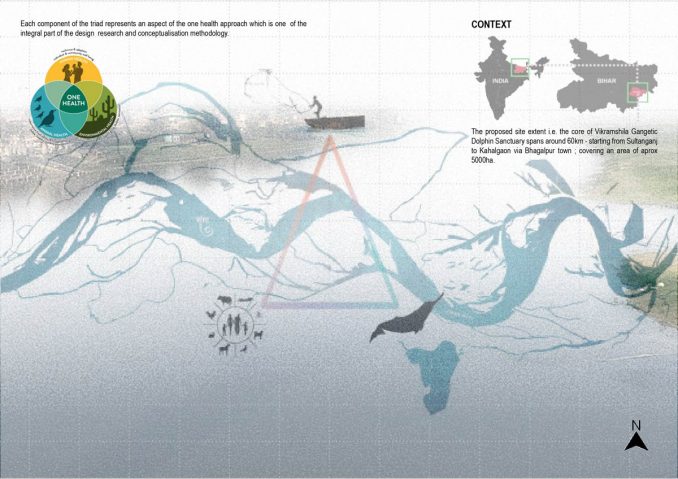
Microbial transfer has been around on this planet since time immemorial, contributing to the emergence of numerous renowned plagues, epidemics and pandemics. Today almost 60 – 80% of the documented infections affecting man are of zoonotic or animal origin, and this is slowly turning into a predominant cause of concern. Studies have identified the causal zoonotic drivers to be linked with factors such as habitat fragmentation, biodiversity loss, agriculture etc. however very few studies have actually attempted to draw a link between them and the discipline of landscape architecture.
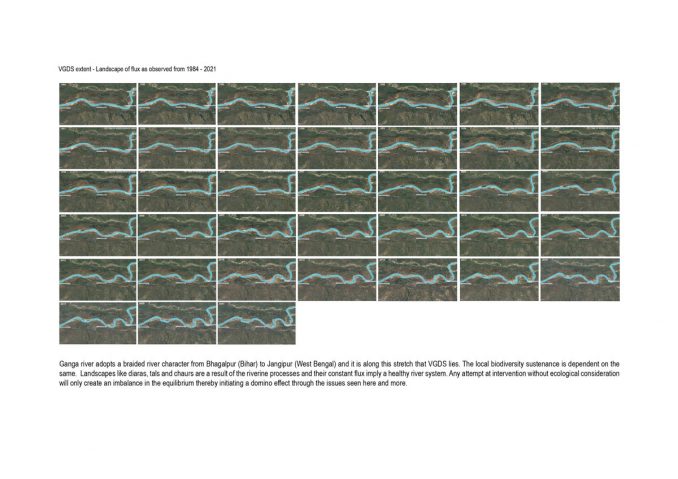
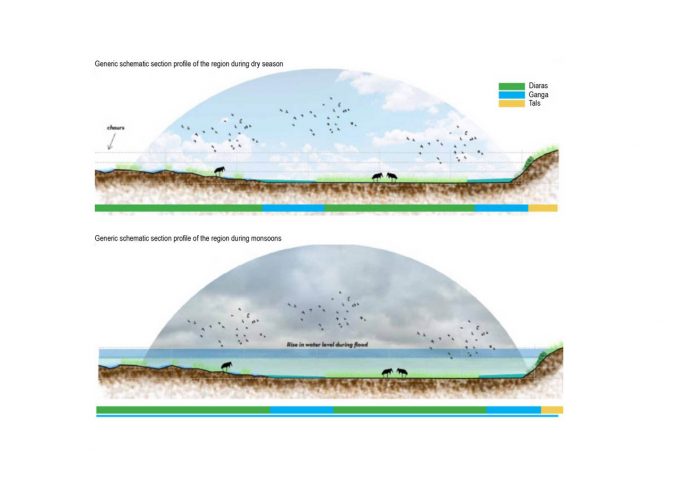
This proposal is an attempt to explore the same by striving to understand how zoonotic resiliency can be achieved in an urban riverine landscape using the case of Vikramshila Gangetic Dolphin sanctuary, Bhagalpur, Bihar, India; therefore, understanding how zoonotic resilient landscapes may be achieved with a major water source as Ganga as an unavoidable study parameter has become more important than ever before with the issues surrounding urban waterscapes. The outcome is a prototypic design approach and framework that may be adapted to any kind of global waterscape or lay the foundation for future advancements. A cemented understanding of the fact that landscape architecture is indeed capable of curbing zoonosis at the initial phases itself is also an added yet inevitable research outcome. Mimicking the natural environment to the best possible is the core strategy to control zoonotic spillover. Strategic and prioritised calls need to be taken in addition to ecological interventions that complement the conventional interventions for attaining higher success rates.
The project elucidates the past and present of the Gangetic River stretch flowing through the sanctuary in addition to providing the means to restore and conserve this sanctuary to its former glory through means of strategic design interventions, and framework.
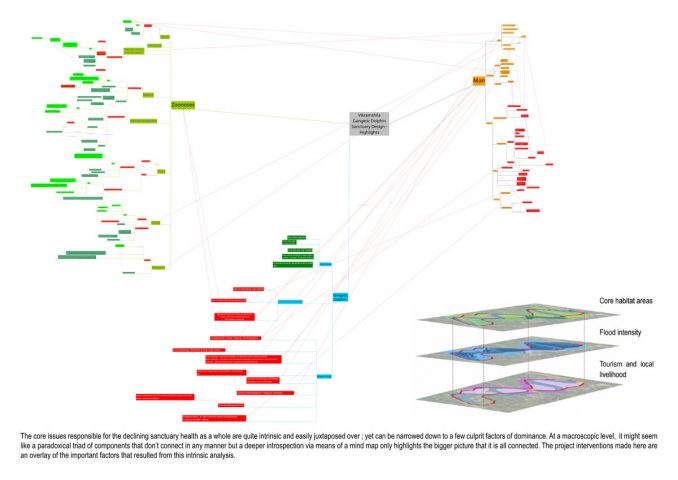
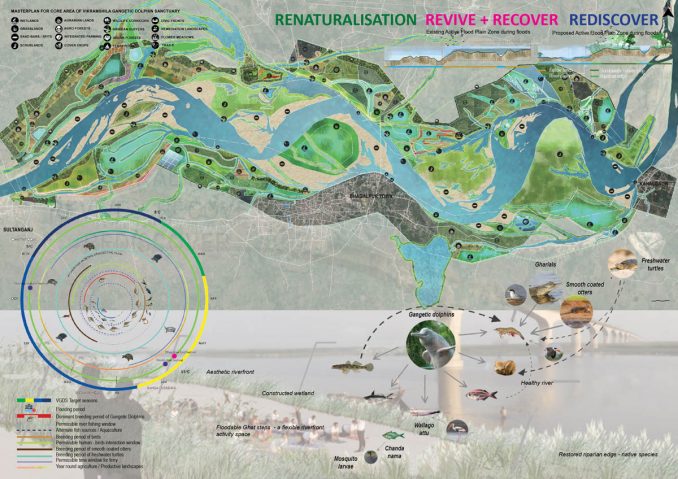
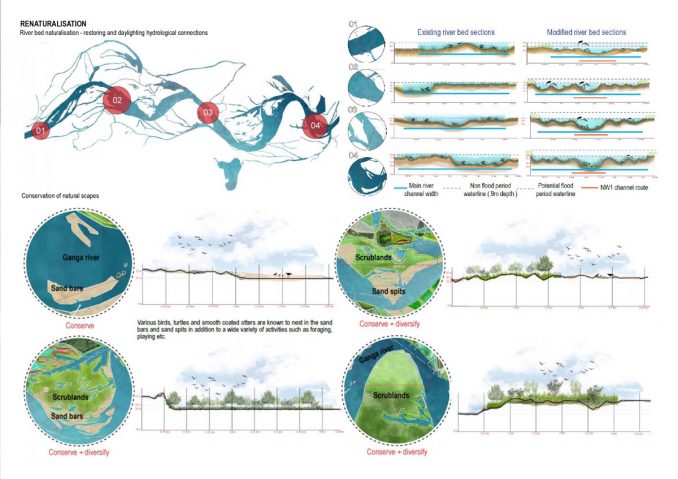
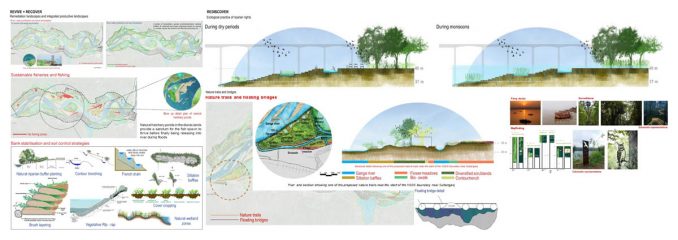
Efforts were made to consider various aspects associated with holistic yet sustainable river sanctuary management for the benefit of both river – its associated dynamics and biodiversity and local community in the region while establishing a consensus between the key unconventional project stakeholders – Dolphin, Man and Zoonoses; wherein Gangetic Dolphins represent the key to ensure sustenance of Ganga River, Man implies both river dependent local communities and numerous visitors that flock the area for varied reasons. Incorporating the element of Zoonoses into the research paradigm only assists to further explore a zoonotically resilient river sensitive development prototype which in light of the ongoing global pandemic highlights an imperative need for further exploration and study.
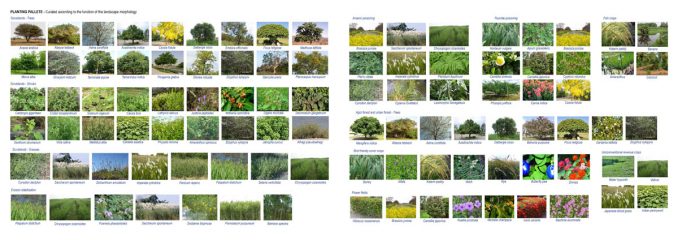
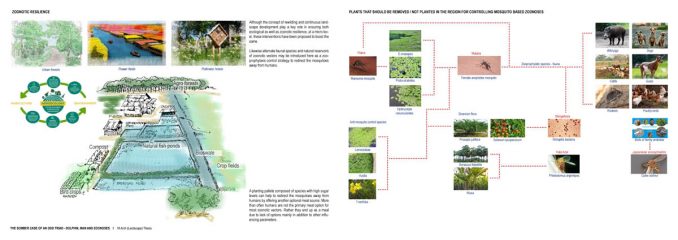
The proposed solutions when implemented shall offer a resilient environment based on one health approach that credits positive planetary health with health of humans, animals and environment while offering multiple benefits such as increased blue – green infrastructure, enhanced quality of life and increased awareness of man towards the existence and importance of nature and its ecosystem services.
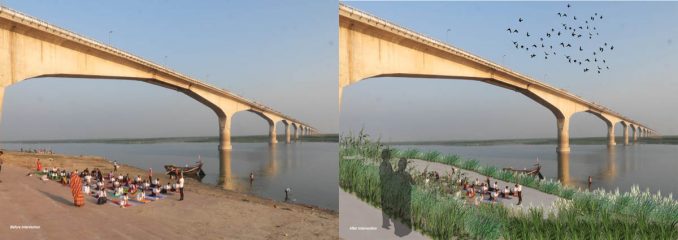
Student Project | Manju Rajeev Kanchan | The Somber Case of An Odd Triad-Dolphin, Man and Zoonoses
Project name: The somber case of an odd triad – dolphin, man and zoonoses
Student name: Manju Rajeev Kanchan
University: School of Planning and Architecture, Vijayawada
Supervisor: Dr.(Prof.) Minakshi Jain
